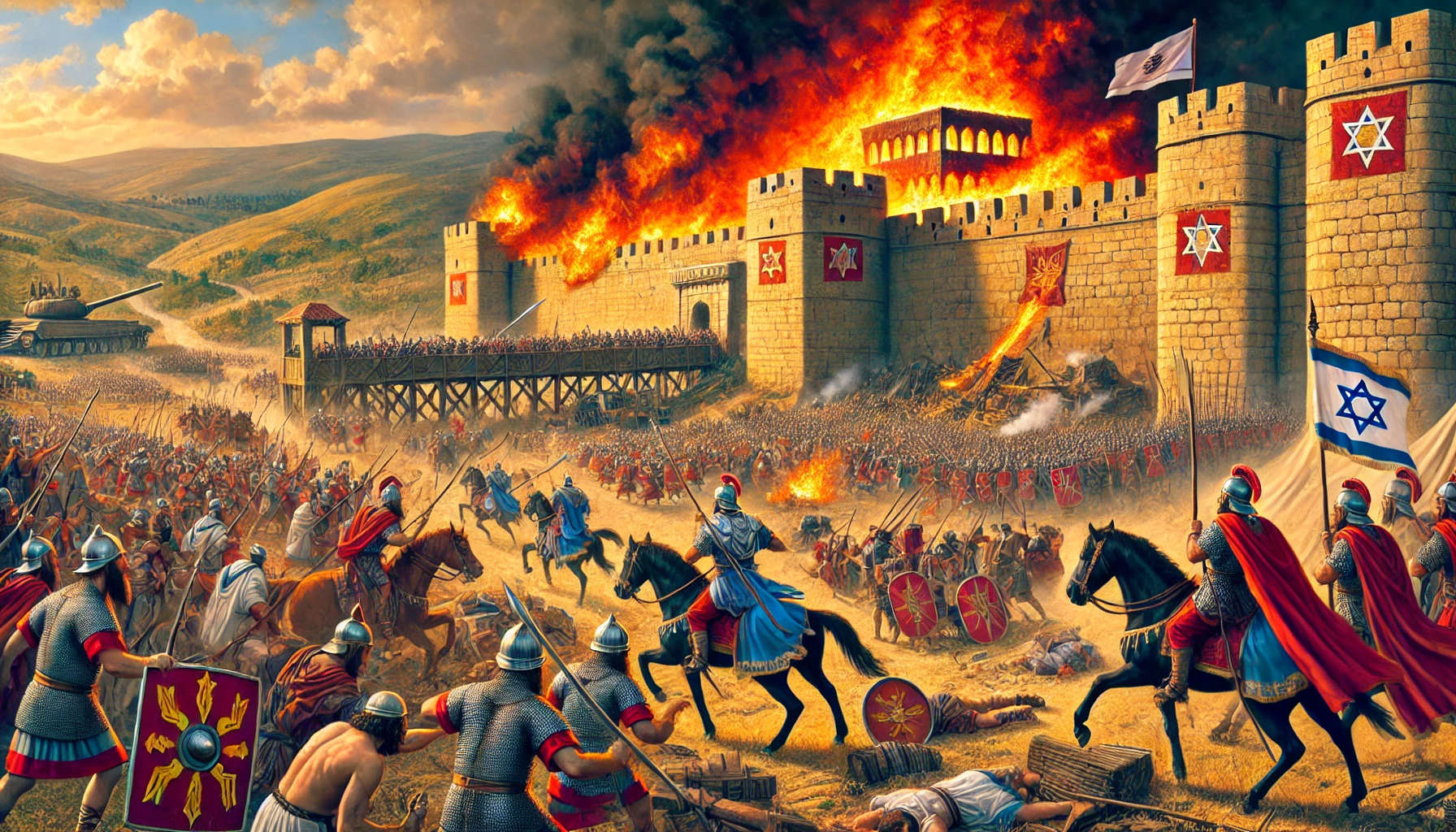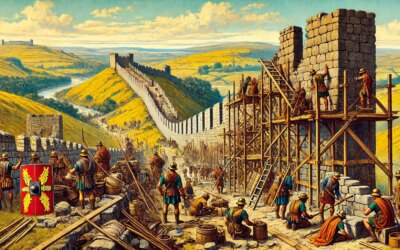The Jewish Revolt and Rome’s Response
By 66 AD, Judea erupted in rebellion against Roman rule. Jewish Zealots, angered by heavy taxation and religious persecution, seized control of Jerusalem. The Roman Empire, under Emperor Vespasian, responded with overwhelming force, sending his son Titus to crush the uprising. By 70 AD, the Roman legions reached Jerusalem, prepared for a brutal siege.
The Siege Begins
Jerusalem’s fortifications were formidable, with three concentric walls surrounding the city. The Romans, equipped with siege engines and battering rams, methodically breached each layer of defense. Starvation and disease ravaged the Jewish defenders as the siege dragged on.
The Fall of the Second Temple
On August 30, 70 AD, Roman forces stormed the Temple Mount. Despite orders from Titus to preserve the sacred site, flames engulfed the Second Temple. The destruction marked a turning point in Jewish history, leading to the diaspora and the loss of Jerusalem as the Jewish center.
The Aftermath and Roman Triumph
With the city in ruins, thousands were slaughtered, and survivors were enslaved. Titus returned to Rome, celebrating his victory with a grand triumph, commemorated by the Arch of Titus. The destruction of Jerusalem solidified Roman dominance but left a lasting scar on Jewish history.
A Defining Moment in History
The siege of Jerusalem was more than a military conquest—it reshaped the religious and political landscape of the region. The fall of the Second Temple remains a defining event, remembered to this day in Jewish tradition.






